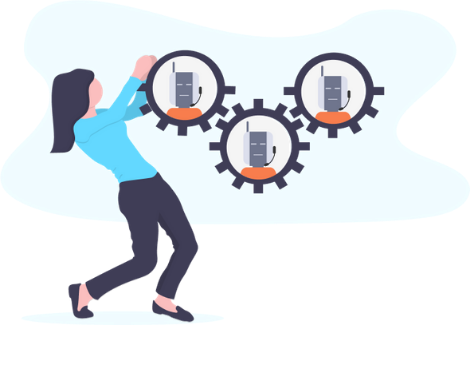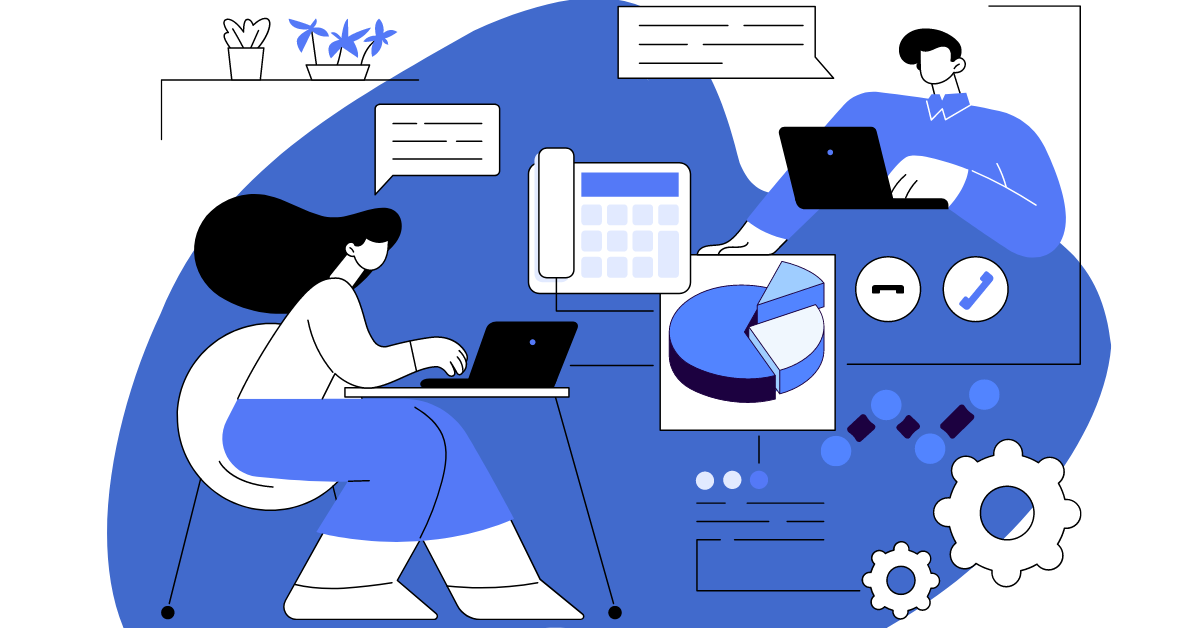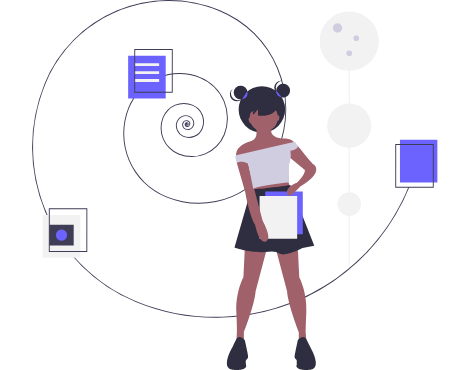In the modern world, many companies face the challenge of needing to call their debtors to notify them of overdue payments or remind them of payment terms. However, making mass calls manually can be an extremely labor-intensive and inefficient process, requiring a substantial amount of time and human resources.
In such a situation, automatic dialing can be an effective solution to the problem. Automating debtor calls significantly reduces time and costs, and also enhances the efficiency of interactions with clients. Debtor dialing programs should have various features, such as voice messaging, CRM integration, and detailed reporting. In this article, we will examine the types of client calls, how to make automatic calls to debtors, and remind you of the benefits of using dialer.
How can you make calls to debtors?
You can call debtors both manually and automatically. Let’s look at each of these methods in more detail:
Manual dialing
Manual dialing implies that each call is made by a company agent who manually dials the debtor’s number and conducts the conversation. Manual dialing can be useful when the number of debtors is limited. However, with a large number of numbers, manual calling of debtors becomes a labor-intensive process, requiring many resources, time and costs for training staff. In addition, manual dialing is often not available at night or on weekends, which can slow down the process of interaction with debtors.
The advantages of manual dialing include the possibility of personalized interaction with debtors, which can lead to boosting the level of trust from clients, and a more flexible approach to solving emerging problems and issues.
Automated dialing
Automated dialing, unlike manual, is carried out with the help of special software, which automatically dials debtors’ numbers and plays a pre-recorded audio message. Dialer can be done at any time of the day and on weekends, and can also be set up for repeated calls in case of no response from the debtor.
The Oki-Toki auto-dialer has several different dialing modes, two of which are fundamental:
- Dialer customers and transferring the call to an agent when the customer answers, that is, at the moment the debtor picks up the phone;
- Automated customer dialing by a robot according to conversation scripts.
Automatic debtors’ dialing is an effective way to reach customers. The advantages of dialer are reducing the time and cost of making calls, improving the interaction with customers, and the ability to collect and analyze data on the effectiveness of a customer call by a robot.
Robot dialer and voice broadcasting
If you make use of automatic debtor dialing, the company’s employees can avoid the need to call each debtor to provide standard information such as the amount of debt, repayment date and terms, interest on late payment, and so forth.
Thanks to voice mailshots, you can simultaneously call several thousand customers, which will be useful if there are many clients with different loan conditions. In addition, this service allows you to send SMS messages to the client if they did not answer the call, as well as in case of DTMF-pressing by the subscriber or voice response. It is also possible to connect external resources to get information about the client, for example, their name, city of residence, as well as the amount of debt during communication with the client and also to send the results using webhooks.
Oki-Toki enables the auto agent to communicate with the client according to a pre-prepared script and record responses, collect DTMF-pressing statistics, and analyze the number of listened audio messages. The auto agent will be able to use information from the CRM, addressing the debtor by name, as well as play back data from the customer card.
The Oki-Toki debtor auto dial system is optimized to achieve maximum performance and increase the number of successful calls.
Auto dial with debtor transfer to agent
The auto-dial feature, which transfers calls directly to an agent, represents another variant of the dialer process. In this case, the software immediately connects the customer with a company representative, eliminating the need for the subscriber to make a selection and wait for a response. If all agents are busy, the dialer is paused until an agent becomes available. This type of dialer is most often used in more complex scripts and unveils the call script to enhance conversation productivity. Additionally, the agent can insert information into the CRM during the conversation with the customer.
The Benefits of Oki-Toki Automatic Dialing
The Oki-Toki software, which provides a full set of tools for effective debt collection service operation, can help automate the process of dialing debtors.
One of the main advantages of the Oki-Toki program is its high efficiency and stability. It enables the dialing of more than 1 million numbers per day, and also boasts a high level of automation, which significantly reduces personnel costs. In addition, Oki-Toki offers extensive customization and integration possibilities with other services, making the program a flexible and convenient solution for various business needs.
Features in Oki-Toki:
- Dialer Task Planning: With Oki-Toki software, you can schedule calls, set the number of attempts and time intervals to ensure successful contact with debtors, whose phone numbers are always busy;
- Voice Message: It’s possible to use voice messages that will be played to customers at the desired time by the Oki-Toki robot. You can use your own recording or voice the message with a synthesized voice;
- CRM Integration: When connecting Oki-Toki to a third-party or our own CRM, the auto-agent can add personal customer data to the recorded audio message, use the customer’s name, surname, address and other information from the subscriber’s card. The service understands and recognizes voice and tone responses from customers, and if necessary, can switch to the desired agent for additional support.
If there are technical issues, difficulties in using the Oki-Toki program, or questions about how to set up an dialer of debtors – you can contact the technical support service that will help you resolve the issue.
Find out more about Robot customer’s Auto Dialing service can be learned in a separate article.
Reporting on dialer
In Oki-Toki, there are several reports on dialer work, including summary and detailed reports, such as “Call Log”, “Task List” and “IVR Report”.
If you need a brief summary, you can use Reports, which enable automated email sending of the most helpful information about the dialer. This may include the number of tasks completed in a month, the percentage of successful calls on the first try, the most common reasons for failed attempts, and the number of missed calls by agents.
Task List shows tasks in line with the given filters, such as the name of the dialer, client phone, timezone, and task status.
IVR Report displays information about the buttons pressed or speech recognition during the auto informer work. This report is needed to assess the quality of work, since you can find out which buttons the customer pressed.
About Oki-Toki Reports is a separate article on the blog.
The Prospects of Auto-Dialing Debtors with Oki-Toki
The automatic dialing of debtor-clients is the most efficient and cost-effective compared to manual calls. Using dialer and a series of voice broadcasts, agents in the contact center will no longer waste time on extended ring listening and technical information delivery such as debt size data. Therefore, you can reduce the number of employees and costs or assign more important, interesting, and complex tasks to your agents. Record your audio messages, set call parameters and scripts for dialogues, compare the call results to debtor-clients, and achieve the highest efficiency.
Find out more about how to organize a contact center for a collection agency with Oki-Toki in a separate article.
On the whole, automated dialing is one of the most effective solutions for interacting with debtors. Using Oki-Toki as a software for dialing debtor-customers can significantly improve your company’s business processes and help achieve greater success in today’s competitive business world.
To set up dialer and call the debtor database, you can go through this link and register on our website. You can calculate the cost of using in your contact centeron the page with the calculator.



